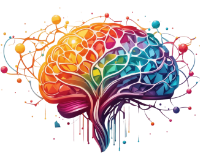Summary: The rigid grip of AI nationalism is loosening as the world begins to prioritize collaboration over competition. By 2025, leaders are expected to align national interests with global efforts, choosing cooperative frameworks over divisive AI arms races. This post explores the evolution from AI nationalism to diplomacy, inspired by lessons from the Cold War and emerging global initiatives.
Reshaping AI: From Gold Rush to Moral Panic
The post-ChatGPT era of artificial intelligence has been a volatile journey, defined by two extremes: exuberant investment and apprehensive caution. As governments and corporations pour billions into the development of advanced systems, calls to pause these efforts echo louder. The result has been a tug-of-war between unlocking technological opportunities and regulating potential harms. This polarization has fed into a narrative of nationalism, with countries treating AI as a tool for asserting dominance rather than an asset for collective human progress.
The Rise of AI Nationalism
AI nationalism is not new. In 2017, Chinese President Xi Jinping declared China’s ambitions to dominate AI by 2030, setting the stage for intense technological competition. The United States responded with protective measures, such as the CHIPS and Science Act of 2022. This legislation was designed to bolster domestic AI capabilities while limiting China’s access to critical semiconductor technologies. Actions escalated further, including the 2024 draft U.S. policies aimed at restricting public and private investments in Chinese AI.
This “battle” framing has turned AI into a geopolitical chessboard, where progress is often measured by one nation’s supremacy over another. But history teaches us that this zero-sum approach comes at a cost. Much like in the Cold War, the adversarial mindset risks not just stifling innovation but sowing distrust and increasing the potential for conflict.
Lessons from the Cold War Playbook
The Cold War wasn’t just an era of tension; it also birthed cooperative ventures that offered hope amidst hostility. Space exploration is a prime example. While political rivalries ignited the space race, the diplomatic framework that followed—led by the U.S.—helped unite nations in an aspirational vision for humanity’s future. The resulting Outer Space Treaty, ratified by the United Nations, established principles to ensure space remained a domain of peace and exploration, not warfare.
World leaders today must adopt similar thinking for AI. Turning the narrative away from competition and towards shared opportunities can pave the way for agreements that protect humanity’s collective interests. This won’t be easy, but it is necessary to avoid entrenching divisions that harm everyone in the long run.
The Shift Towards Global Cooperation
Signs of change are already visible. Increasingly, policymakers and experts advocate for international standards and solutions that transcend borders. Upcoming events like the AI Summit in France, led by President Macron, signal a new focus on collaboration. Macron’s decision to shift the summit’s emphasis from “safety” to “solutions and standards” indicates a desire to embed AI into a global framework grounded in mutual trust and benefit.
The United Nations is also stepping into this conversation. Plans to develop a globally integrated approach to AI policy mark an essential step towards bridging divides between nations. By championing inclusiveness and transparency, the UN could facilitate the formation of agreements akin to the treaties that governed space exploration decades ago.
US-China Diplomacy: A Tentative First Step
Even the world’s two dominant AI powers, the United States and China, are showing signs of thawing relations. In 2024, a significant development unfolded as the two nations established a bilateral consultation channel dedicated to AI. While this initial dialogue may not instantly resolve long-standing disputes, it signals a willingness to communicate—a critical first step in shaping cooperative frameworks.
Diplomacy doesn’t promise immediate results. However, history suggests that consistent effort in maintaining channels of cooperation can lead to transformative outcomes. Much like the cooperative agreements forged during the Cold War, these initial talks could lay the groundwork for more comprehensive partnerships in the future.
What 2025 Could Look Like
By 2025, the tone around AI is likely to shift from discord to diplomacy. International summits, collaborative UN plans, and bilateral efforts between AI superpowers point to a future where AI is viewed as a shared asset rather than a contested territory. While competition will never vanish entirely—and healthy competition can spur innovation—the narrative surrounding AI can tilt towards cooperation.
A world aligned on the benefits of AI cooperation could foster breakthroughs in education, healthcare, climate change mitigation, and countless other areas. Choosing collaboration over nationalism isn’t just idealistic; it’s pragmatic. Nations can achieve far more collectively than they can by working in silos. The question isn’t whether global AI cooperation is possible—it’s how fast we can make it the centerpiece of the conversation.
The era of AI nationalism doesn’t need to define us. With bold leadership and shared goals, 2025 can mark the beginning of a truly global approach to one of humanity’s most powerful tools.
#AINationalism #GlobalCooperation #AISummit2025 #USChinaDiplomacy #EthicalAI #AIPolicy
Featured Image courtesy of Unsplash and Ben White (gEKMstKfZ6w)
